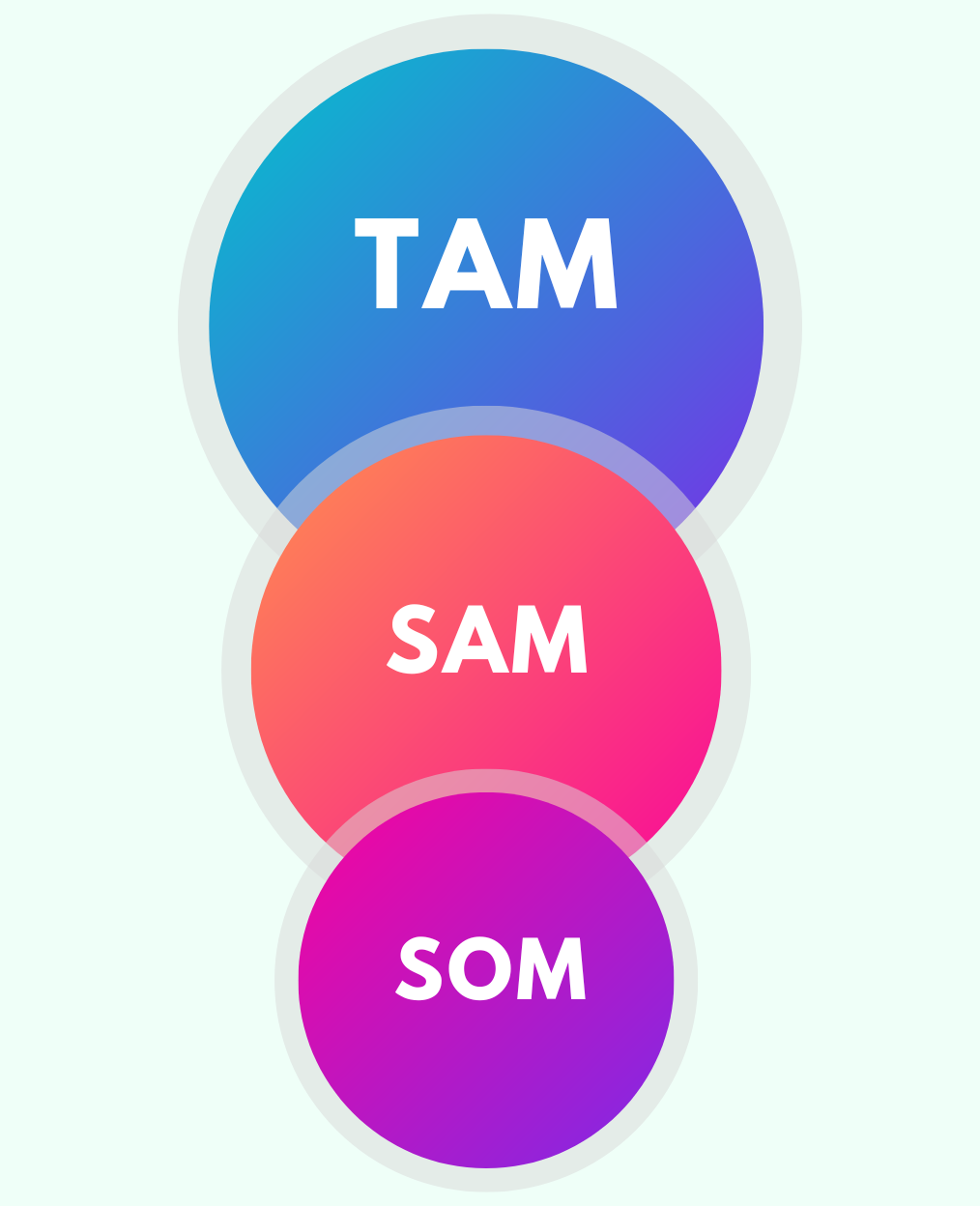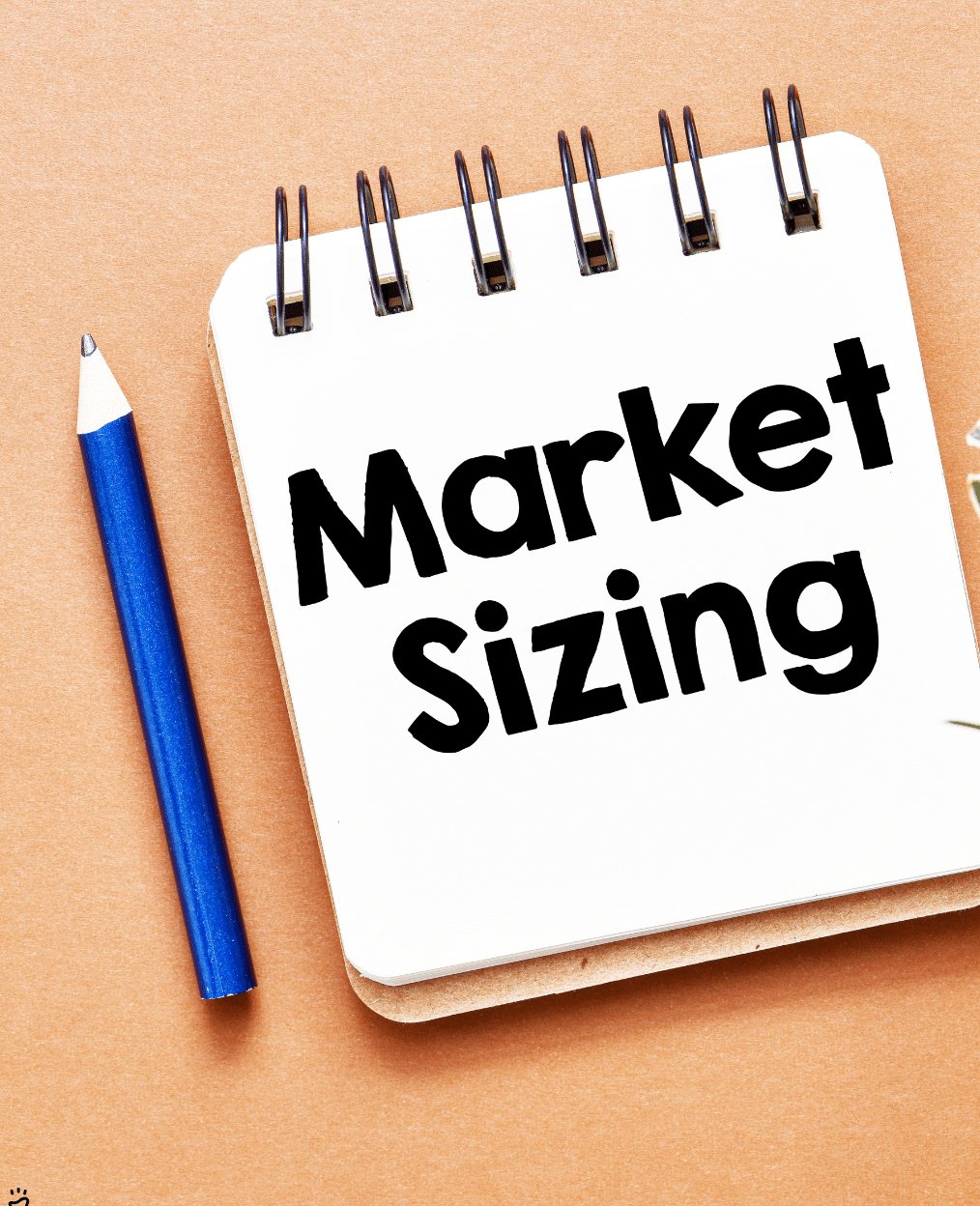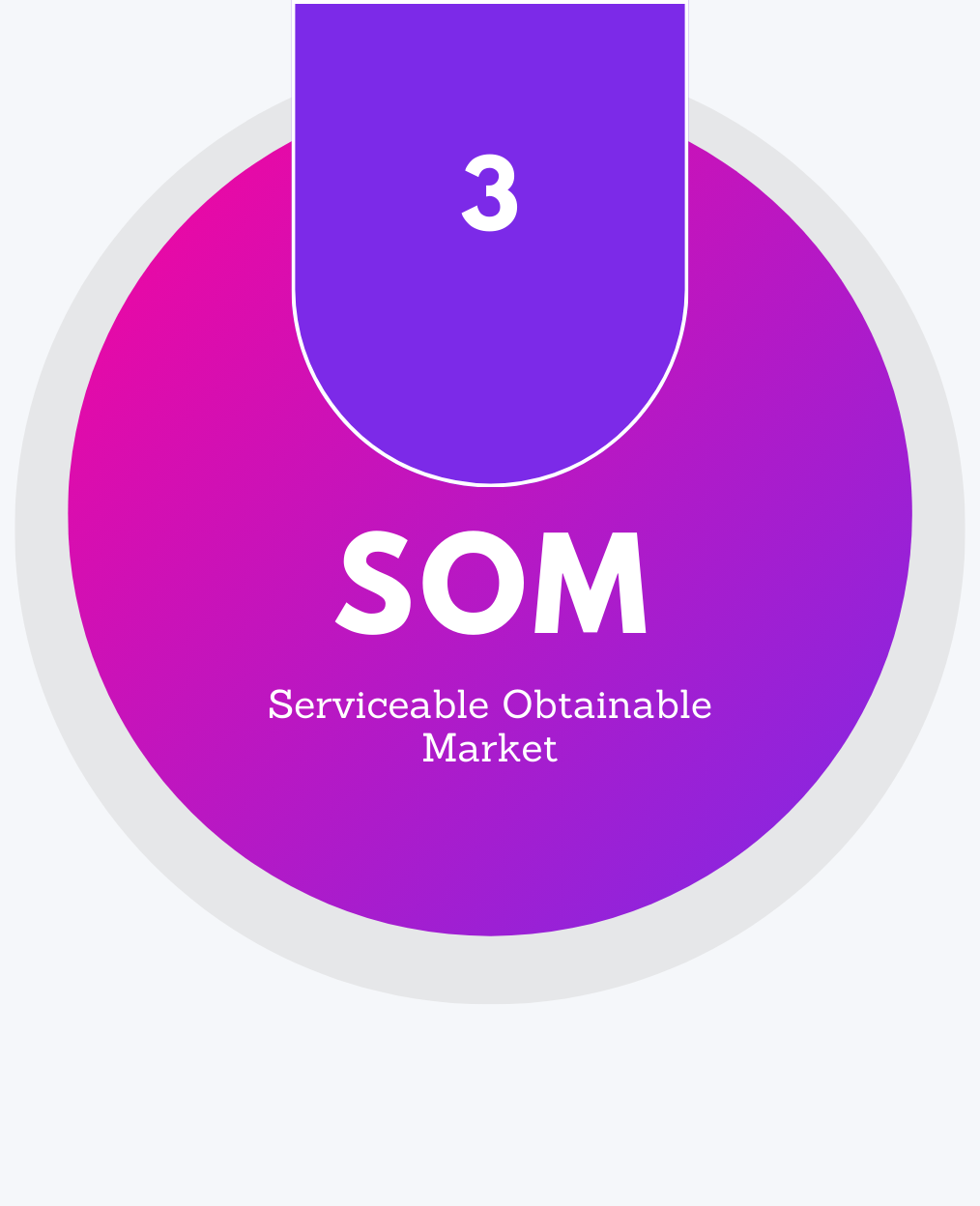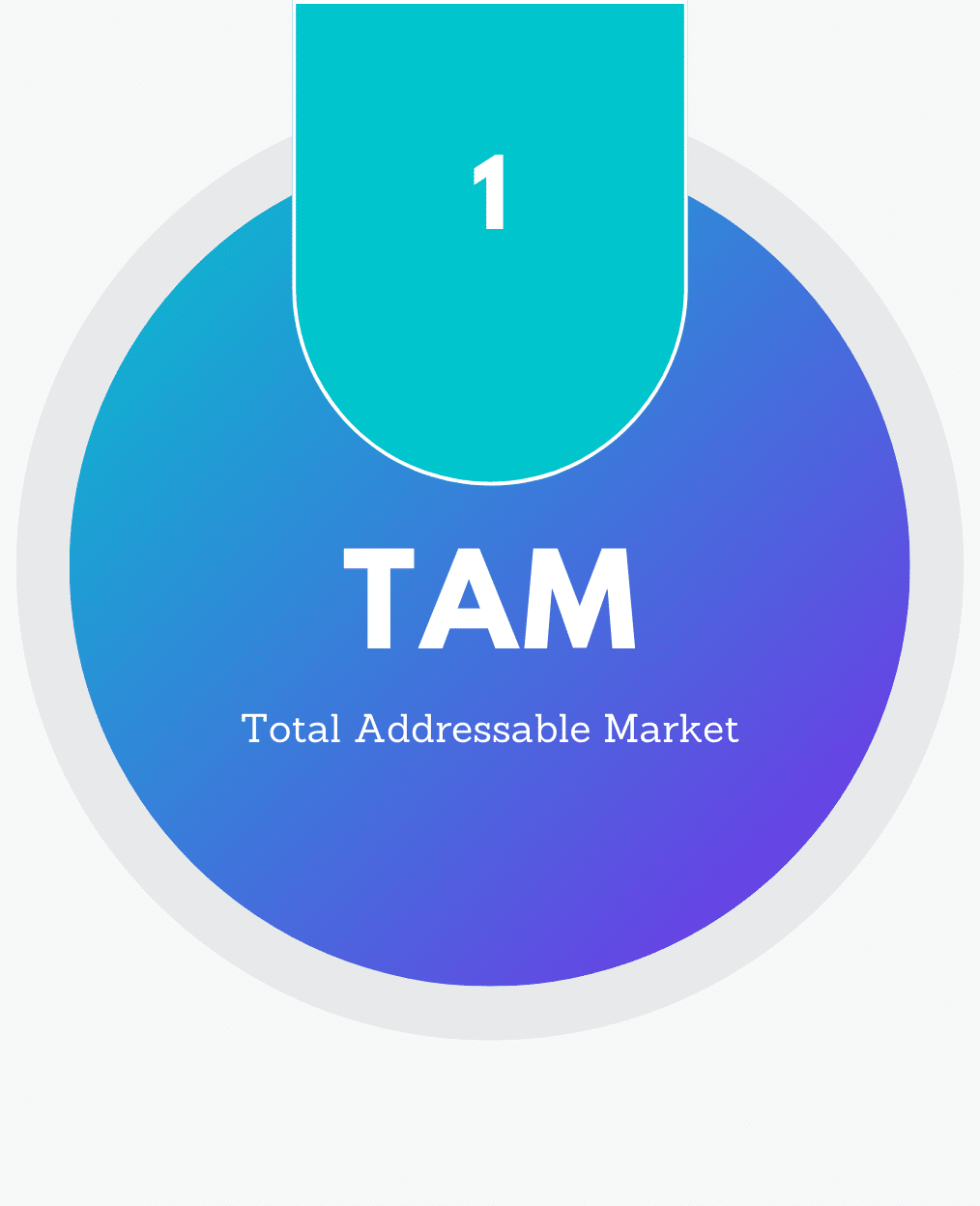
Understanding the size of your potential market is critical to the success of any business. Whether you’re a startup seeking investment, an established company planning to launch a new product, or an entrepreneur validating an idea, knowing your market size helps you make informed decisions.
As a business university lecturer and researcher, I’ve built my career on thoroughly understanding business models and strategic planning frameworks like TAM SAM SOM.
The knowledge shared in this guide is not just based on theory—it’s been applied in practice, helping startups secure investments, aiding businesses in refining their market strategies, and guiding professionals in executive decision-making.
Key Takeaways
- TAM SAM SOM are critical tools for evaluating business opportunities and growth potential.
- Accurate market sizing helps refine business strategies, ensuring you’re targeting the right market.
- Investors rely on TAM SAM SOM metrics to assess the scalability of your business, making these metrics crucial for fundraising and strategic planning.
- Key Takeaways
- What is TAM (Total Addressable Market)?
- What is SAM (Serviceable Available Market)?
- What is SOM (Serviceable Obtainable Market)?
- Why Market Sizing (TAM SAM SOM) is Crucial for Businesses
- TAM vs. SAM vs. SOM: Key Differences
- Common Misunderstandings About TAM, SAM, and SOM
- How to Use TAM, SAM, and SOM for Your Business
- Conclusion
- Frequently Asked Questions
What is TAM (Total Addressable Market)?
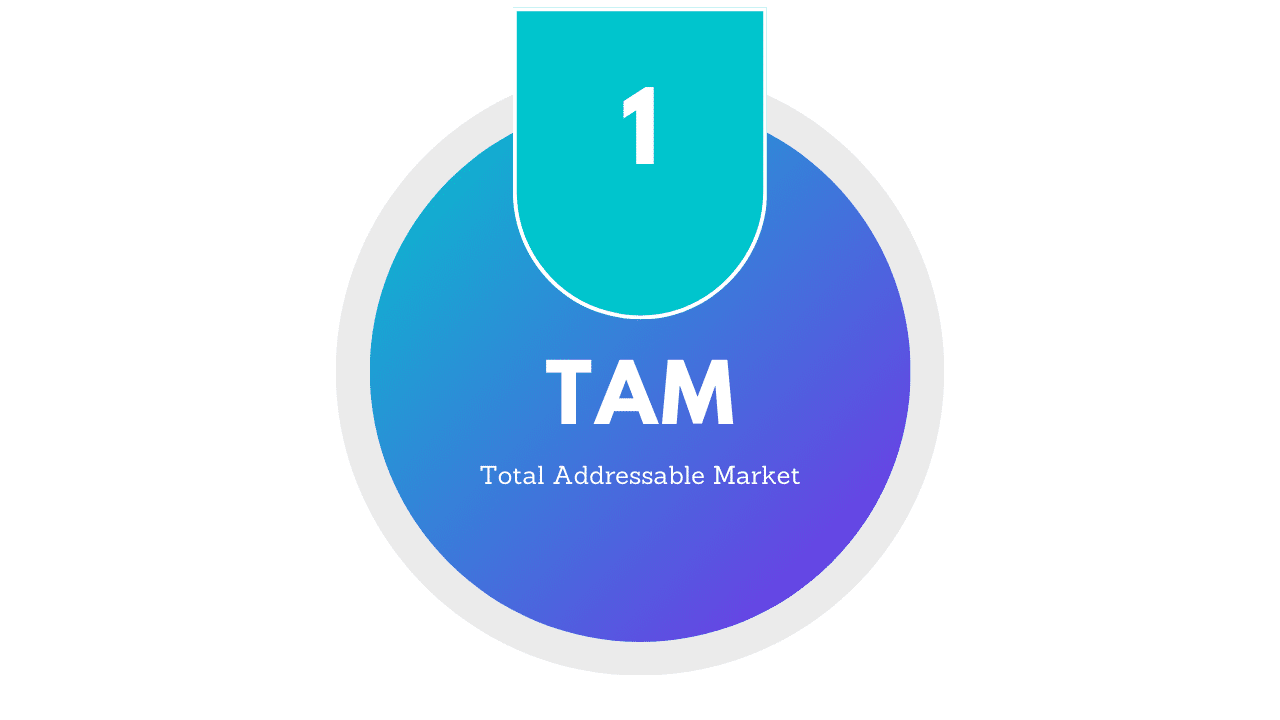
When I explain Total Addressable Market (TAM) to my students, I describe it as the broadest measure of potential market size—the entire revenue opportunity available if a business were to capture 100% of the market. This is often the first step businesses take to understand their potential for growth.
One student once asked me, How can we apply TAM to a niche product?
That was a great opportunity to dive deeper into how TAM works in various industries. I explained that even niche products can have substantial TAM if they address a significant pain point or demand in the market.
It’s not just about how big the market is, but whether your product is positioned to meet those demands effectively.
TAM is crucial for understanding the maximum revenue potential. It helps businesses evaluate their total growth opportunities.
Understanding TAM helps in crafting long-term growth strategies. It allows me to see the broader possibilities and set realistic growth targets. By analyzing TAM, I can better position my business within the industry.
In the scope of market analysis, TAM sits at the top. It is the starting point before narrowing down to the Serviceable Addressable Market (SAM) and Serviceable Obtainable Market (SOM).
To know how to calculate TAM, check our comprehensive guide What is Total Addressable Market (TAM) and How to Calculate It?
What is SAM (Serviceable Available Market)?

Serviceable Available Market (SAM) is a concept I often emphasize in my lectures. SAM represents the portion of TAM that a business can realistically target based on its product fit, geographic focus, and operational capabilities.
When discussing SAM, I remind my students that while TAM shows the total market potential, SAM is where a business starts to find its true opportunity.
BUT, why can’t we just go after the entire TAM? That is one question entrepreneurs struggle with.
TAM is often too broad to be realistic. For instance, a product with global appeal may only have infrastructure or marketing capabilities to serve a single region—like the U.S.—which means narrowing the focus to SAM is essential.
This is particularly important for startups with limited resources; by focusing on SAM, they can ensure that they are putting their efforts into the markets they can serve best.
To know how to calculate SAM, check our comprehensive guide What is serviceable addressable market (SAM) and How to Calculate It?
What is SOM (Serviceable Obtainable Market)?
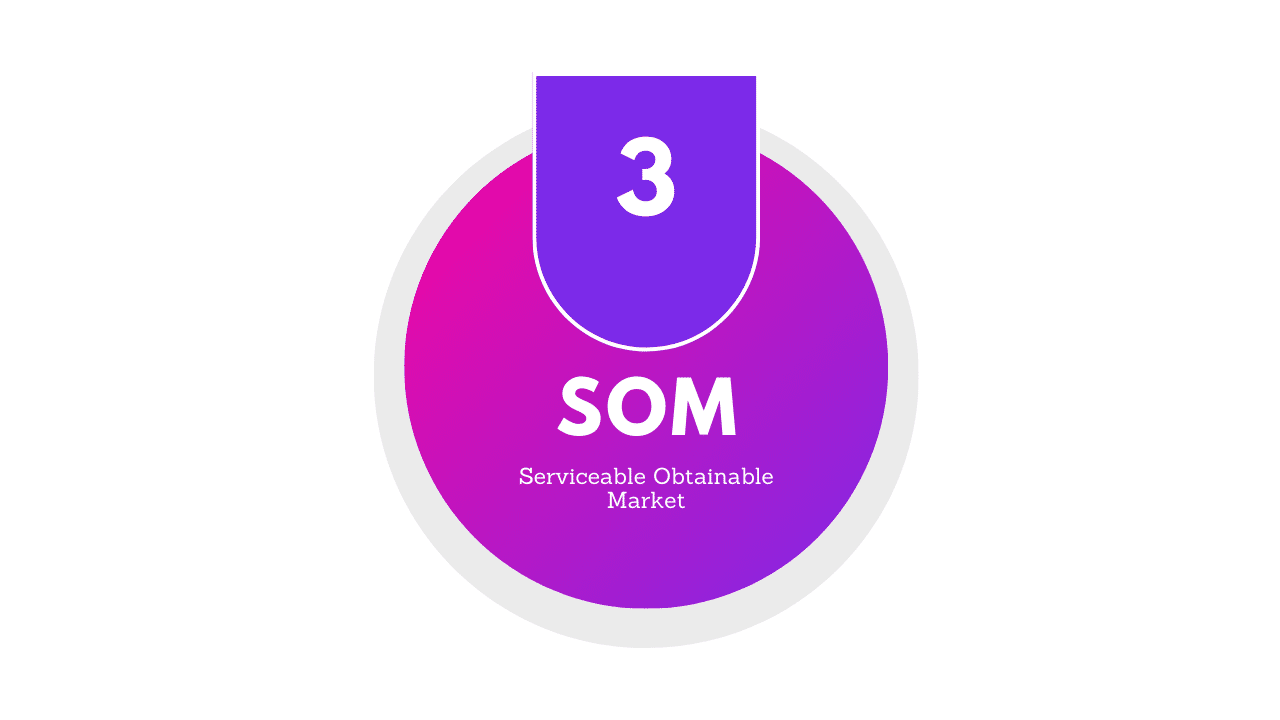
Serviceable Obtainable Market (SOM) is where businesses get practical about their market capture. In my courses, I often tell my students, “This is where the rubber meets the road.”
SOM is the portion of SAM that a business can realistically capture, considering competition, market dynamics, and internal resources.
One student once posed a question during a class discussion: How do we know what part of the market we can realistically capture?”
I explained that SOM requires businesses to look inward as much as outward—understanding your own capabilities is just as important as understanding market opportunities.
In practice, I’ve helped businesses use SOM to make realistic projections about market share. During a recent consulting engagement, I worked with a company to evaluate their SOM in the highly competitive health tech space.
By analyzing their competitors and their own operational strengths, we identified a realistic portion of the market they could capture, which in turn helped them create a credible growth plan for investors.
To know how to calculate SOM, check our comprehensive guide How to Easily Calculate Your Serviceable Obtainable Market (SOM) in 2024
Why Market Sizing (TAM SAM SOM) is Crucial for Businesses
Understanding TAM SAM SOM isn’t just academic—it’s a critical part of strategic business planning that I’ve used to help businesses of all sizes, from startups to well-established companies.
One common question I get is Why does market sizing matter so much?
The answer is simple: without a clear sense of market size, businesses run the risk of either overextending themselves or missing out on significant opportunities.
Knowing your TAM helps you see the full potential, while SAM and SOM guide you toward realistic, actionable goals.
In my consulting experience, accurate market sizing has helped businesses refine their product development strategies and ensure that they’re focusing on the right customer segments.
For investors, TAM, SAM, and SOM provide a clear view of potential market success. When I analyze investment opportunities, I look for accurate assessments of these metrics.
Investors want to see growth forecasting and potential scalability, which are easier to achieve with precise market sizing.
TAM vs. SAM vs. SOM: Key Differences
While TAM (Total Addressable Market), SAM (Serviceable Available Market), and SOM (Serviceable Obtainable Market) are closely related, they each serve a distinct purpose in market analysis.
When it comes to market analysis, understanding the distinctions between TAM, SAM, and SOM is key to building a sound strategy.
These metrics help businesses understand the market’s potential from a broad, high-level view down to a targeted, actionable market share. But it’s not just theory—using real-world examples to illustrate these concepts is essential for clarity and practical application.
Let’s consider a startup developing a new smart fitness wearable designed to track biometric data like heart rate, sleep patterns, and oxygen levels. The company wants to understand the size of its market before launching.
- TAM: At first, the company considers the entire global wearable technology market, estimated at $61 billion. This is their total addressable market (TAM)—the broadest view of their potential, representing anyone globally who might buy a wearable device. But reaching 100% of this market is not feasible due to geographic, product, and operational limitations.
- SAM: Next, the company focuses on the specific segment of the market they can serve. They plan to launch the product only in North America for the first few years, where the wearable market is valued at $20 billion. This becomes their serviceable available market (SAM). Although the broader market is $61 billion, only this $20 billion reflects the opportunity they can realistically target at this stage due to geographic focus and their current business infrastructure.
- SOM: Finally, the company looks at how much of the North American market it can realistically capture, factoring in competition and their specific value proposition. After assessing their competitive advantages, resources, and sales capacity, they estimate they can capture 5% of the North American market, which equates to $1 billion. This is their serviceable obtainable market (SOM), the portion of the market they can practically expect to win within a realistic timeframe.
Using TAM, SAM, and SOM helps businesses understand the full scope of opportunity but also stay grounded in reality. In the example above, the company could get excited about the $61 billion TAM, but the real actionable data lies in the $1 billion SOM—a target that reflects current market conditions and competition.
TAM shows the broader opportunity; SAM refines that to the target market; and SOM pinpoints the achievable market share. Together, these metrics guide decisions, ensuring the business focuses on realistic, measurable goals while staying aware of long-term potential.
This layered approach is particularly useful when seeking investment. Presenting TAM gives investors a sense of the market’s total scale, but breaking it down to SAM and SOM provides a realistic roadmap for growth, which is critical for building confidence in the business plan.
For a deeper dive into the criteria venture capitalists use to evaluate TAM, check out our full guide on How Do VCs Evaluate TAM
Common Misunderstandings About TAM, SAM, and SOM
Over the years, both in my classroom and consulting work, I’ve encountered several common misunderstandings about TAM SAM SOM that can lead businesses down the wrong path.
These misunderstandings often arise from oversimplifying the concepts or confusing their roles in strategic planning.
Addressing these misconceptions can prevent costly mistakes when evaluating market size.
Misconception 1: “TAM is the same as SAM.”
One of the most frequent errors I see is the assumption that TAM (Total Addressable Market) is the same as SAM (Serviceable Available Market). Students often ask, “Why can’t we just target the entire TAM?” This question highlights the need to distinguish between the two. While TAM represents the entire potential market, SAM reflects the market segment you can realistically serve, based on factors like geography, customer demographics, and your product’s unique fit. I always remind businesses and students that it’s essential to focus on SAM to make practical, data-driven decisions, rather than getting distracted by the sheer size of TAM.
Misconception 2: “If the TAM is large, our business will automatically succeed.”
Another frequent misunderstanding is the belief that a large TAM guarantees business success. One of my students once commented, “Our TAM is huge, so we’re set for rapid growth!” While a large TAM does indicate significant potential, it doesn’t mean success is automatic.
Without properly understanding your SAM and SOM, you could be targeting too broadly or ignoring competitive pressures. I’ve seen startups with high TAMs fail because they didn’t account for the realities of their SAM or the competition within their SOM.
Misconception 3: “SOM is just about projections; it doesn’t require deep analysis.”
Some businesses mistakenly view SOM (Serviceable Obtainable Market) as a rough estimate rather than a figure based on rigorous analysis. I always emphasize that SOM is much more than a guess—it’s an actionable figure based on real competitive analysis, operational capacity, and resource allocation.
Failing to put effort into accurately calculating SOM can lead to unrealistic growth projections and missed opportunities for optimization. As one of my clients discovered, adjusting their SOM after a more detailed analysis helped them better position their product in a competitive market and focus their resources on achievable growth targets.
How to Use TAM, SAM, and SOM for Your Business
Understanding TAM, SAM, and SOM is one thing—using them effectively is another. I frequently guide students through the practical applications of these frameworks, emphasizing how they can shape a company’s strategy.
Define Your Market
Before you can calculate TAM, SAM, or SOM, you need a clear understanding of your market. Start by defining exactly who you’re targeting with your product or service. This involves identifying key characteristics of your audience, such as:
- Geographic location(s)
- Demographics like age, gender, and income level
- Specific needs or problems your product solves
- Behavioral factors, such as purchasing habits or product usage frequency
The clearer and more specific you are about who your target audience is, the more accurate your market sizing will be.
Use a TAM Calculation to Understand the Total Market
Now it’s time to do some research. TAM (Total Addressable Market) is the broadest measure of your potential market size. This step involves figuring out how many people or businesses could theoretically use your product and what the total revenue opportunity is if you could capture the entire market.
For example, if you sell a skincare product aimed at women between the ages of 25 and 65, your TAM would represent all women in that age range globally or nationally, depending on your market focus. The goal here is to get a sense of the largest possible opportunity for your business.
Calculate SAM to Focus on Your Target Market
Once you have your TAM, it’s time to narrow it down to your SAM (Serviceable Available Market). SAM helps you focus on the part of the market you can actually serve, based on your business’s geographic location, product fit, and logistical capabilities.
For instance, if you’re a U.S.-based luxury skincare brand targeting women aged 25-65, your SAM would be the subset of women in the U.S. who are interested in high-end skincare products. This step helps you focus your resources on a more realistic portion of the market that aligns with your business’s strengths and reach.
Refine Your SOM to Find Your Market Share
Next, you’ll calculate SOM (Serviceable Obtainable Market), which represents the portion of SAM that your business can realistically capture. This is where factors like competition, market conditions, and your business’s capacity to serve customers come into play.
In the skincare example, your SOM would be the percentage of women in the U.S. who not only fit your target demographic but also are likely to purchase your product given the current competitive landscape. This step involves refining your focus further by considering which customers you’re most likely to win over based on your unique selling points and market positioning.
Identify Opportunities and Challenges
With your TAM, SAM, and SOM calculations in hand, it’s time to analyze the data and develop your business strategy. Ask yourself key questions like:
- What trends are shaping the market right now?
- How is the competition performing, and what are their weaknesses?
- Are there gaps in the market that you can exploit?
- Which market segments are being underserved or overlooked?
Armed with these insights, you can refine your marketing, sales, and product development strategies to better align with the most promising market segments. You’ll also have a clearer understanding of potential obstacles and how to navigate them.
Conclusion
Understanding TAM, SAM, and SOM is crucial for developing a solid marketing strategy. It helps me identify the total available market, the segment I can serve, and the portion I can realistically capture.
By breaking down these components, I can better tailor my go-to-market strategy. Focusing on the obtainable market allows me to allocate resources more efficiently and target potential customers effectively.
The framework also highlights potential operational impacts. Understanding market size helps me plan production and distribution, minimizing risks and maximizing growth potential.
Incorporating TAM, SAM, and SOM into my business approach provides a clear roadmap. It informs decisions and aligns objectives with market realities.
Check out our Market Sizing Cheat Sheet for straightforward tips and frameworks!
Frequently Asked Questions
What is a TAM example?
For a global smartphone company, the TAM would be the total number of smartphone users worldwide.
What is an example of a SAM?
If that smartphone company only sells in Europe, the SAM would be the number of smartphone users in Europe.
What is an example of SOM?
For a smartphone company with a SAM of 100 million smartphone users in Europe, if the company estimates it can realistically capture 10% of that market due to competition and brand presence, the SOM would be 10 million customers.
A quick overview of the topics covered in this article.
Latest Posts
December 21, 2025
December 21, 2025
Subscribe to our newsletter
Get valuable insights and business guidance sent to your email.

